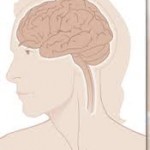
The article cites a study published in the Journal of Neurosurgery, which found that a concussion is usually diagnosed according to athletes’ subjective symptoms. Researchers also concluded that use of the term “concussion” in sports injuries may differ from how it is used in other medical contexts. That could potentially hinder communication about the factors most relevant to patient outcomes.
The report quotes lead researcher Ann-Christine Duhaime, MD, director of the Pediatric Brain Trauma Lab at Massachusetts General Hospital, as saying: “The term ‘concussion’ means different things to different people, and it’s not yet clear that the signs and symptoms we now use to make a diagnosis will ultimately prove to be the most important pieces of this complicated puzzle.”
Duhaime says some patients who receive a diagnosis of concussion go on to have very few problems. Conversely, some patients who sustained potentially serious head injuries may not get a diagnosis because they don’t show any immediate symptoms.
According to the article, the study is part of a larger, five-year investigation into the biomechanical basis of concussion and the effects of repeat impacts to the head, conducted at Brown University, Dartmouth College and Virginia Tech.
Researchers equipped 450 students on the schools’ football and ice hockey teams with helmets that had instruments measuring the frequency, magnitude and location of head impacts. During the study, team trainers and physicians followed standard procedures for assessing and diagnosing potential concussions and prescribing treatment.
During the study period, more than 486,000 head impacts and 48 diagnosed concussions were recorded.
Although the concussion could be associated with a specific impact in 31 out of 48 cases, no clearly associated impact was identified in the other 17 instances. The most commonly reported symptoms were mental cloudiness, headache and dizziness. Only one of the athletes lost consciousness.
According to researchers, an immediate diagnosis was made only six times. Many of the athletes did not experience any symptoms until several hours after the game.
Though measured head impacts in the cases of athletes diagnosed with concussion tended to be higher, some concussion-associated impacts had considerably less measured acceleration/deceleration of the head.
Researchers also noted that the injuries reported in this study, where repetitive impacts were more of a factor, contrasted with those usually seen in patients diagnosed with concussion in emergency departments. For the latter category, a single head impact is typically associated with immediate changes in consciousness.
See the article here:
https://medicalxpress.com/news/2012-10-criteria-sports-injuries-inconsistent.html
